Stars & Empire: 10 Galactic Tales Read online
Page 39
Then it was over. The silence was deafening and only the moon lit up the night. Jason stood stock still, staring at the spot where the object had disappeared. His breathing was quick and shallow and his eyes scanned the ridgeline for any sign of movement. Something was very wrong. He had caught a glimpse of the object as it crossed the sky; it was definitely some sort of aircraft and it had been trailing fire and billowing smoke as it screamed over his cabin. But it had been unlike any aircraft he had ever seen or heard of, even from his time in the military. His instincts told him that this was no ordinary aviation mishap. The long duration of the explosive roar after the craft had flown over was simply not consistent with an aircraft impacting the ground and exploding.
Jason ran back into his cabin and picked up the land line—his cell phone was useless this far up in the mountains—and was greeted by more silence. The line was dead. With only a moment’s hesitation he went upstairs and quickly dressed in old fatigue pants, boots, and pulled a hoodie sweatshirt over his t-shirt. The night was cold, but he knew he’d be moving fast enough to stay warm without a coat. He hesitated momentarily, then the last thing he grabbed from his bedroom was an AR-15 carbine from the corner of the closet and a loaded 30-round magazine from the top shelf. He knew he may very well be a paranoid fool, but something about this didn’t sit well with him and the weapon gave him a sense of security.
He paused again at the back door and grabbed a small, high-intensity flashlight and stuffed it in his front pocket and slipped his wallet into his back pocket. He slapped the magazine into the rifle’s lower receiver, grabbed the charging handle and cycled the weapon’s action, loading a live round into the chamber. He verified it was on “safe” and slipped outside. Jason closed the door without a thought of locking it; there was nobody within miles of the small cabin, one of the main reasons he was hiding out in it.
He hopped off the porch and headed down a well-worn trail that led into the woods. His familiarity with the land allowed him to move quickly through the pine trees with only the light of the moon to illuminate his path. He judged that the aircraft (or, most likely, the crash site) was no more than two or three klicks away given the speed it was traveling and the time from when he lost sight to when the sound had stopped. He had no idea what he expected to see when he got there, so he mentally prepared himself for anything and everything.
The easy, loping gait Jason assumed was good for covering distances relatively quickly without leaving him worn out when he arrived. The few kilometer run, even through the rugged mountain terrain, wasn’t much of a challenge to him. The AR-15, a civilian version of the military M4 rifle he had trusted his life to many times, was a comforting weight in his hands as he jogged, holding it across his chest. As he ran he could feel the subtle change from the drowsy, relaxed demeanor he had adopted in the small mountain town he lived in to a brittle alertness that had been finely honed by multiple combat tours in Iraq and Afghanistan. Nothing escaped his attention; every sound and shadow was scrutinized and catalogued as he ghosted through the wilderness towards his destination.
Soon there was a discernable brightness along the ridgeline up ahead so Jason slowed to a walk and then eventually stopped. He crouched down on the soft earth and strained his ears for any sound that wasn’t natural. The light was definitely artificial, however faint it was. The hue and brightness told him the light was not coming from a natural source, and the steady, constant glow was also inconsistent with flaming wreckage, the thing he most expected to find. He began a silent stalk the remaining distance up to the ridge and paused right below the crest of the hill. He could now hear and feel a dull thrum coming from the area as well as the occasional sound that he could only describe as mechanical. Why was he so wired and apprehensive over what was most likely an aviation mishap? Whatever the reason, he had learned long ago not to shrug off the feeling; it was a lesson that had nearly cost him his life.
The last five meters to the top of the ridge were made at a snail’s pace as Jason crawled on his elbows and the toes of his boots, the AR-15 cradled protectively in his arms. He knew this area well from months of scouting out from his cabin and knew there was a large clearing up ahead, the soil being too rocky for the trees to take hold. The clearing sloped gradually west from his current position and ended in another tree line before butting up against the next rise. His crawl ended right before his line of sight would clear the ridgeline and he’d be able to see down into the clearing. At this point, the light was quite bright and the sounds of metal scraping on metal and the occasional clanking were clear as a bell. Jason hunched his shoulders forward and dug his elbows into the soil, then slowly used his shoulders and back to drag himself up the last little bit so he could get a clear view of his objective.
Although he wasn’t sure what he had expected to see, the view stunned him nonetheless. The clearing was dominated by what was clearly an aircraft of some type, but it was unlike any he had ever seen or even heard of. For starters, it was simply huge. Jason had seen C-5 Galaxy cargo aircraft during his time in the service, but the craft currently sitting in front of him would easily dwarf the Air Force’s largest plane. Despite its size, Jason was also certain he was looking at a tactical vehicle and not some slow, ungainly cargo hauler. The craft appeared to be an elongated delta shape from his vantage point above and behind it. There were discernable wings that extended out from the main fuselage, but the sweep maintained the same angle that started at the nose, far too steep a rake for normal flight. There were also what appeared to be two stabilizers extending out from the tail section at forty-five degrees, but even with his rudimentary knowledge of aerodynamics Jason could see that their orientation in relation to the wing would make them nearly useless at controlling the pitch of the craft, as well as probably adversely affecting the wing’s performance. There were four engine nozzles that were arranged in pairs in two nacelles tucked up under the wing roots at the tail of the aircraft, but instead of the expected stream of hot gas Jason would normally expect from a gas turbine, a passive, wavering blue glow was pulsating down the visible length of the interior of the engines.
There were some other details that also stayed Jason’s first instinct to race down the hill and render aid to any possible survivors, reasons in addition to the size and configuration of it. The aircraft (a word Jason insisted on still using to describe the behemoth in the clearing) was obviously damaged—badly—and it also had obviously landed, not crashed. Even from his position, he could tell the thing was sitting on its landing gear, but what threw him was how. A vehicle this large with such a swoopy, fast design should not be able to land vertically in an uneven, rough mountain clearing that could barely contain it. Or land vertically at all, for that matter. There was also the speed at which the craft had buzzed his cabin; it had been subsonic, but just barely, and it was streaming flames and smoke at the time, apparently a result of the damage he was looking at. This meant that even with that damage, the craft had managed to stop its considerable forward velocity and descend safely in a controlled landing. He realized that this must have been the sustained, explosive roar he had heard on his back porch: it had to have some type of incredibly powerful retro-thrust system. Jason’s mind boggled at the amount of thrust it would take for the giant craft to hover and control its vertical decent, let alone stop it in midair. He moved his AR-15 into position and peered through the scope to get a better view. Even with the relative low magnification of the small tactical scope, he could clearly see much of the damage. Scorch marks were visible on the left side of the upper fuselage and there appeared to be impact damage in that area as well as a possible breach in the skin. While large aircraft looked tough and rugged, Jason knew they were relatively fragile objects and it occurred to him that there could still be injured crew on board this one.
He was the type of person who didn’t waste time on indecision, so once he determined his course of action, he set about aggressively executing it and didn’t expend any energy on regrets or conte
mplation about things he couldn’t go back and change. He slowly slid himself out from his hiding spot and began a methodical descent down the steep hill towards the mysterious craft that was smoking and hissing before him. He knew it was probably smarter to haul ass back to his home and try to find some way to alert the authorities, but he couldn’t resist the excitement of it. He was sure this was no experimental aircraft for the U.S. military. Well, mostly sure. But beyond that, he was unsure as to what this was that had blown away his peace and quiet. It couldn’t really be an airplane, could it?
He descended the slope rapidly, using the trees for both cover and support to keep his speed in check. While he was still concerned about stealth, he knew the still-running engines from the craft should mask the sound of the loose dirt and scrub he was kicking up as he slid/hopped down the hill. He paused at the edge of the clearing and dropped to a knee. Holding perfectly still, he strained his ears and eyes to detect any trace of movement that indicated he had been detected. He was still obeying that extra sense that told him the utmost caution was required. He took off towards the craft at a crouched, loping gait that covered the gap quickly but didn’t leave him breathless when he reached it. What in the hell am I doing here? The first twinges of real fear entered his mind as he approached to within twenty meters of the thing and realized just how large and alien it really was.
He stood under the left engine nacelle and looked around at the underbelly of the huge aircraft. The landing gear was the traditional tricycle type he was accustomed to: each strut ending in a dual-axle beam that was supported by a total of four wheels per assembly. Or at least they looked like wheels of a sort. They were spherical and obviously attached to the landing gear assemblies, but there were no visible fasteners or hubs that he could see. He peered around, unsure what his next course of action should be. He had rushed under the craft mostly on impulse. Now he wasn’t sure what, exactly, he had hoped to accomplish. Just then, the aft section of the underbelly dropped a foot or so and rapidly lowered to the ground accompanied by the unmistakable whine of a hydraulic pump. After Jason had recovered from the sudden shock, he saw that the section of the skin between the engine nacelles had actually pivoted downward rather than lowered. It was a ramp.
Without thinking, Jason rushed towards the lowered end and came around the edge, raising his rifle halfway up as he did so without even realizing it. Nobody was there. The ramp led up into a well-lit bay that he couldn’t see into from his position at the bottom of the ramp. Shrugging slightly to himself, he walked up the ramp. Hell, he had committed this far to an idiotic course of action, he may as well see it through to the end. Once at the top of the ramp, he found himself standing in the mouth of a large cargo bay. It was both familiar and somehow not. On one hand, it looked very much like the interior of a C-17 cargo jet; even the spars lining the walls that curved upwards into an arch very much looked like countless other aircraft he had been in. But on the other hand, there were some unsettling differences. The spars and the floor, for example, looked to be far too heavily built to be for any conventional aircraft. That, and the area was too sterile; it was completely void of the wire harnesses and machinery that littered the interior of any cargo plane he had ever been on.
His inspection was cut short when two louvered vents on the forward bulkhead opened and the interior of the cargo bay was suddenly transformed into a wind tunnel. Jason dropped to one knee and grabbed a tie-down point with his left hand while his right maintained control of his weapon. He closed his eyes and grimaced in agony from the overpressure as the air velocity continued to increase and an acrid smell began to fill the area. He opened his eyes and saw the vents were now belching out a thick, noxious smoke. His throat and eyes were on fire as he turned and tried to safely exit the cargo bay. Mercifully, the violent rush of air and smoke died down as suddenly as it had started. Coughing and streaming mucus, he only wanted to get down the ramp and into the fresh air he knew was just outside.
He turned back around just in time to see the ramp raise and lock and a set of interior doors slide around into place. He felt his ears pop from the pressure change and knew he was sealed in. Unfortunately, so were a good amount of the fumes from the vents. He was quickly losing consciousness so he couldn’t tell if the floor was actually moving or not. Climbing into this thing may have been a tad impulsive. Even through his tunneled vision and detached perception, he was still surprised when the floor heaved and threw him into the rear doors.
CHAPTER 2
The blackness started to become gray.
Jason swam towards the light as his concussed brain struggled to restart all his cognitive functions. The gray tunnel he was looking though wavered and then coalesced into the deck plates of a C-17’s cargo bay. But something was wrong about the metal surface his face was planted into. He lifted his head as his brain began to get feedback from the rest of his body: it hurt. Everywhere. His training overrode his panic and he lay still and began to systematically flex muscle groups to find out if, and where, he was injured. To his relief, the only true injury was his little finger on the left hand; it was severely dislocated. It hurt like hell, but he was still mobile.
He smoothly rolled to his side and got to his knees. Every part of his body screamed in pain, but he ignored it. He blinked his eyes and shook his head side to side to chase away the grogginess. Ah, yes … the “aircraft.” Other than his finger, which was sticking out at an unnatural angle, he appeared to be only slightly bruised and battered from his impact with the rear doors of the cargo bay. The lights in the hold were now dimmed considerably from when he’d first made entry, but he could still see well enough to move about. The next thing he noticed after his injuries was a conspicuous lack of weight in his hands. While he would normally be humiliated for losing control of his weapon, right then he was so confused as to what he had gotten himself into that he was not especially concerned with the normal operator bravado, doubly so since there was nobody there to see him anyway.
Climbing to his feet, he saw the AR-15, sans magazine, against the starboard wall of the cargo hold. Even as he was moving to retrieve the rifle, he was scanning the room for the magazine that must have ejected on impact. It took him a few more minutes to find the black polymer magazine, and when he saw it he feared the worst. If it had broken, he would be down to a single round in the chamber and he was now half convinced he had gotten himself into a situation that he may have to shoot his way out of. Happily, the magazine appeared to have suffered no ill effects from the abuse save for some superficial scratches. He slapped the mag back into the rifle and again felt ready to make some moves, even though his finger really, really hurt.
Jason’s only priority at that point was to get out of the craft and make it back out of the area unseen. He has already gotten more than he’d bargained for during his ill-planned rescue attempt; he would clear the area and try again to alert the authorities. As he approached the rear doors, he could tell something was different. When he had first entered, there were the normal noises one would associate with that environment: air handlers, machinery humming, and the occasional high-pitched whine of a hydraulic accumulator charging. All these things were still present, but now there was a low-pitched rumble that drowned out all the other sounds, and it wasn’t the noise Jason would typically associate with turbine engines. Although a part of his mind was cataloguing all of these anomalies, he didn’t let anything distract him from his goal. In this case, his goal was the control panel mounted in a pedestal on the right side of the door that looked to be a likely location for the door/ramp controls.
When he reached the pedestal that he assumed controlled the rear doors, he was brought up short. If he still had any doubts that this was an American aircraft, they were confirmed by the panel’s display. The symbols on the screen were definitely written words, but it was not in any language Jason recognized. That wasn’t necessarily saying a lot; he only spoke English. He tentatively touched the display to see what would happen. He was rew
arded with the display turning red and a short blast from a klaxon-style horn. Some more odd script scrolled across the screen and then it went dark. Subsequent touches on the panel elicited no reaction. Fantastic. Now what? He turned back to look at the front bulkhead to see what other options he might have.
There were two doors in the forward bulkhead of the cargo bay. One was at deck level and was large and very heavily built. The second door looked like the typical interior hatch you would see on a naval surface vessel, ovoid in shape and slightly inset into the bulkhead. It was directly over the first, larger door and accessible by a walkway and a staircase that ran down the port side of the cargo bay. The lower door looked well-secured but the upper door looked like a standard crew access hatch. With the same lack of thinking that had gotten him into the situation in the first place, he moved decisively towards the staircase and the upper access hatch.
He stood before the hatch and couldn’t find an obvious handle to open it. He did, however, see a large red, circular button. Doing what humans instinctually do when confronted with a large red button, Jason pressed it. Thankfully, the hatch simply slid aside into the wall recess giving Jason easy access to the interior of the craft. He peered into the doorway, rifle at the ready, but there was nothing to see except a dark passageway. Of course it has to be dark. He was beginning to be less and less comfortable about his situation, if that was even possible. Everything seemed … off. Even the act of walking had an odd feel to it.
Remembering he had slipped his flashlight into his pocket, he grabbed it and lit up the area just beyond the hatch. It was rather anti-climactic; there was nothing but a short passage with a touchscreen control panel on the wall displaying that same indecipherable language as in the cargo bay, and another entry hatch at the far end. As he crossed the threshold of the hatchway, the flashlight slipped out of his hand and hit the deck. He froze instantly. That was definitely not right. There was a barely perceptible delay from when he expected the light to hit the floor and when it actually did.

 The Emperor's Fist
The Emperor's Fist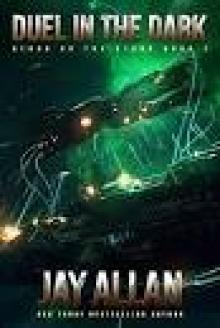 Blood on the Stars Collection 1
Blood on the Stars Collection 1 Attack Plan Alpha (Blood on the Stars Book 16)
Attack Plan Alpha (Blood on the Stars Book 16) BOB's Bar (Tales From The Multiverse Book 2)
BOB's Bar (Tales From The Multiverse Book 2) The Others
The Others Nightfall
Nightfall Empire's Ashes (Blood on the Stars Book 15)
Empire's Ashes (Blood on the Stars Book 15)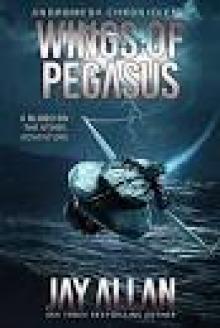 Wings of Pegasus
Wings of Pegasus Crusade of Vengeance
Crusade of Vengeance The Last Stand
The Last Stand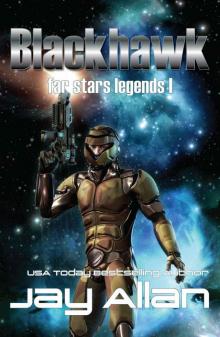 Blackhawk: Far Stars Legends I
Blackhawk: Far Stars Legends I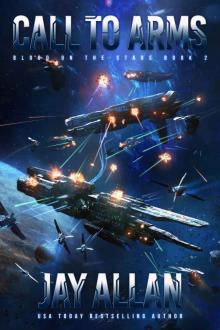 Call to Arms: Blood on the Stars II
Call to Arms: Blood on the Stars II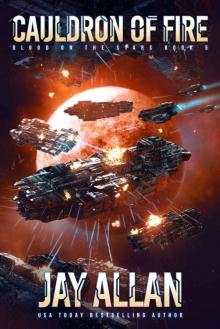 Cauldron of Fire (Blood on the Stars Book 5)
Cauldron of Fire (Blood on the Stars Book 5) Revenge of the Ancients: Crimson Worlds Refugees III
Revenge of the Ancients: Crimson Worlds Refugees III Crimson Worlds Successors: The Complete Trilogy
Crimson Worlds Successors: The Complete Trilogy The Grand Alliance
The Grand Alliance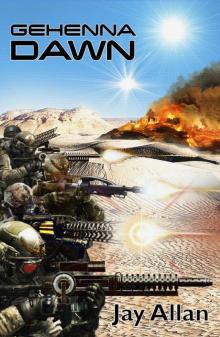 Portal Wars 1: Gehenna Dawn
Portal Wars 1: Gehenna Dawn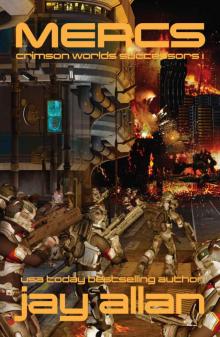 MERCS: Crimson Worlds Successors
MERCS: Crimson Worlds Successors Crimson Worlds: 08 - Even Legends Die
Crimson Worlds: 08 - Even Legends Die Winds of Vengeance
Winds of Vengeance Invasion (Blood on the Stars Book 9)
Invasion (Blood on the Stars Book 9)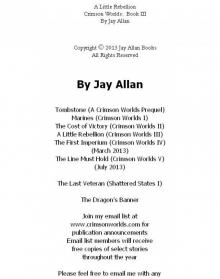 A Little Rebellion (Crimson Worlds III)
A Little Rebellion (Crimson Worlds III)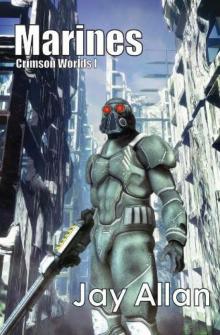 Marines
Marines Black Dawn (Blood on the Stars Book 8)
Black Dawn (Blood on the Stars Book 8)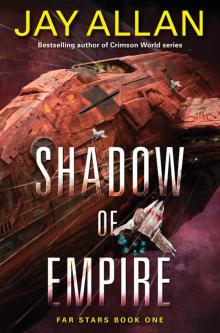 Shadow of Empire
Shadow of Empire Galactic Frontiers: A Collection of Space Opera and Military Science Fiction Stories
Galactic Frontiers: A Collection of Space Opera and Military Science Fiction Stories Winds of Vengeance (Crimson Worlds Refugees Book 4)
Winds of Vengeance (Crimson Worlds Refugees Book 4) Dauntless (Blood on the Stars Book 6)
Dauntless (Blood on the Stars Book 6) Portal Wars: The Trilogy
Portal Wars: The Trilogy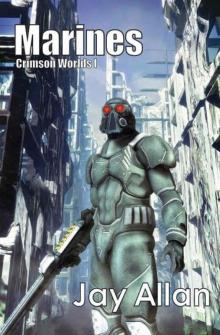 Marines cw-1
Marines cw-1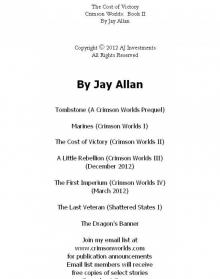 The Cost of Victory
The Cost of Victory Marines (Crimson Worlds)
Marines (Crimson Worlds) The Ten Thousand: Portal Wars II
The Ten Thousand: Portal Wars II The White Fleet (Blood on the Stars Book 7)
The White Fleet (Blood on the Stars Book 7)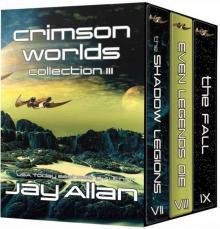 Crimson Worlds Collection III
Crimson Worlds Collection III The Black Flag (Crimson Worlds Successors Book 3)
The Black Flag (Crimson Worlds Successors Book 3) Tombstone
Tombstone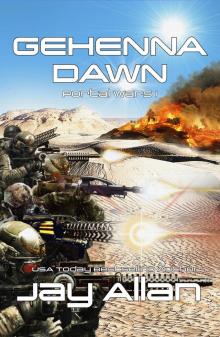 Gehenna Dawn
Gehenna Dawn A Little Rebellion (Crimson Worlds)
A Little Rebellion (Crimson Worlds)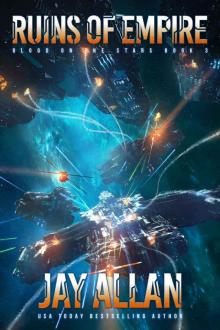 Ruins of Empire: Blood on the Stars III
Ruins of Empire: Blood on the Stars III Dauntless
Dauntless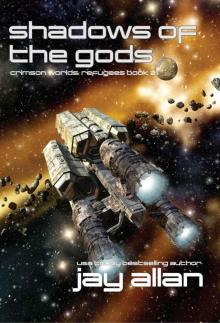 Shadows of the Gods: Crimson Worlds Refugees II
Shadows of the Gods: Crimson Worlds Refugees II The Dragon's Banner
The Dragon's Banner Echoes of Glory (Blood on the Stars Book 4)
Echoes of Glory (Blood on the Stars Book 4)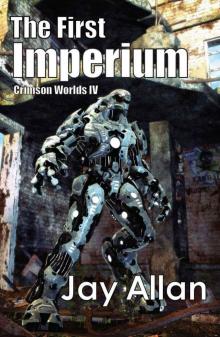 Crimson Worlds: 04 - The First Imperium
Crimson Worlds: 04 - The First Imperium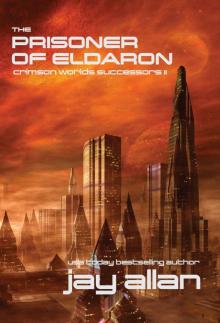 The Prisoner of Eldaron: Crimson Worlds Successors II
The Prisoner of Eldaron: Crimson Worlds Successors II The Cost of Victory (Crimson Worlds)
The Cost of Victory (Crimson Worlds) Duel in the Dark: Blood on the Stars I
Duel in the Dark: Blood on the Stars I Into the Darkness: Crimson Worlds Refugees I
Into the Darkness: Crimson Worlds Refugees I Crimson Worlds Refugees: The First Trilogy
Crimson Worlds Refugees: The First Trilogy The Cost of Victory cw-2
The Cost of Victory cw-2 Stars & Empire 2: 10 More Galactic Tales (Stars & Empire Box Set Collection)
Stars & Empire 2: 10 More Galactic Tales (Stars & Empire Box Set Collection) Flames of Rebellion
Flames of Rebellion Stars & Empire: 10 Galactic Tales
Stars & Empire: 10 Galactic Tales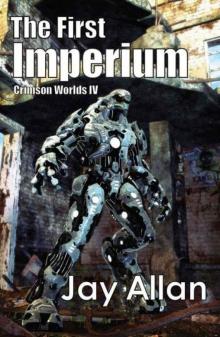 The First Imperium cw-4
The First Imperium cw-4 Crimson Worlds: 07 - The Shadow Legions
Crimson Worlds: 07 - The Shadow Legions Storm of Vengeance
Storm of Vengeance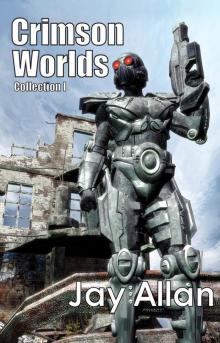 Crimson Worlds Collection I
Crimson Worlds Collection I Rebellion's Fury
Rebellion's Fury Homefront: Portal Wars III
Homefront: Portal Wars III Tombstone (crimson worlds)
Tombstone (crimson worlds) Crimson Worlds: Prequel - Bitter Glory
Crimson Worlds: Prequel - Bitter Glory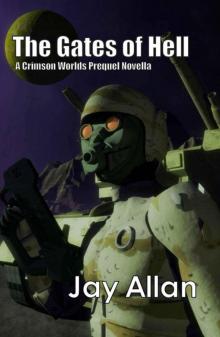 Crimson Worlds: Prequel - The Gates of Hell
Crimson Worlds: Prequel - The Gates of Hell The Fall: Crimson Worlds IX
The Fall: Crimson Worlds IX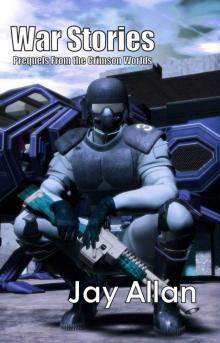 Crimson Worlds: War Stories: 3 Crimson Worlds Prequel Novellas
Crimson Worlds: War Stories: 3 Crimson Worlds Prequel Novellas Enemy in the Dark
Enemy in the Dark Crimson Worlds Collection II
Crimson Worlds Collection II